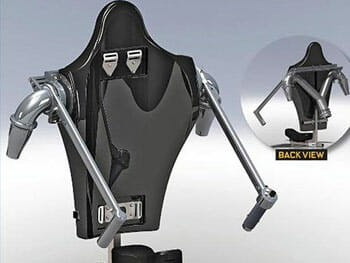
JetLev is one model of a relatively new type of recreational device, commonly known as a jet pack, that allows thrill-seekers to take flight. The jet packs, strapped over the shoulders and worn on the back, propel riders into the air with a stream of water. The equipment is tethered to a small, pilotless boat while the rider, using hand-held throttles, controls the speed of up to 25 miles per hour and height of up to 30 feet.
Sound like fun? It could be. But, as the website for the JetLev Flyer warns, any activity involving speed, heights, water or power equipment is inherently risky. Some adventurers have gotten more “excitement” than they bargained for.
In March, a flyer in Newport Beach, California, shot up and backward after accelerating too quickly, so an operator on the ground remotely cut the throttle, sending the man falling back toward the water. He hit the watercraft connected to the jet pack and required medical treatment.
In 2012, a customer sustained a concussion after falling from the air during a jet pack ride; his lawsuit was settled for $100,000.
Currently in Maryland, there are three businesses, all located in Ocean City, which offer jet pack adventures. Safety concerns about this type of joyride have prompted the Maryland Department of Natural Resources (DNR) to establish emergency regulations governing jet pack operators. During the 180-day emergency regulation period that began in June, DNR’s Boating Services and Natural Resources Police will be examining how the temporary rules affect the general public and boating operations. Depending on the results, they may hold a public hearing in January 2015 to possibly enact permanent regulations.
Among the restrictions included in the emergency regulations are these:
- No one under the age of 16 may rent a jet pack vessel.
- Riders must wear a helmet and a high impact personal flotation device.
- No rides between sunset and sunrise or when visibility is restricted.
- An observer must be on a navigable rescue vessel located at least 100 feet but not more than 300 feet away from the rider.
- Observers must meet Maryland requirements of a vessel operator.
Falling from the air and landing on water isn’t a soft landing, as any kid doing a cannonball off the high dive can tell you. Worse than that, though, is that hitting the surface at the wrong angle could cause spinal injuries or bone fractures. An impact with the jet pack’s control craft is likely to cause lacerations, severe bruising and possibly head trauma.
Summertime is full of adventure opportunities. If you or your loved one is the victim of an extreme sporting accident in Maryland, call Steve Heisler, The Injury Lawyer, at (410) 625-4878.
